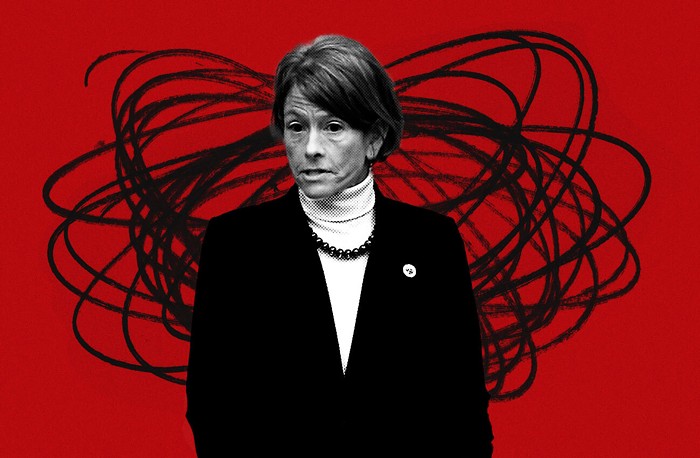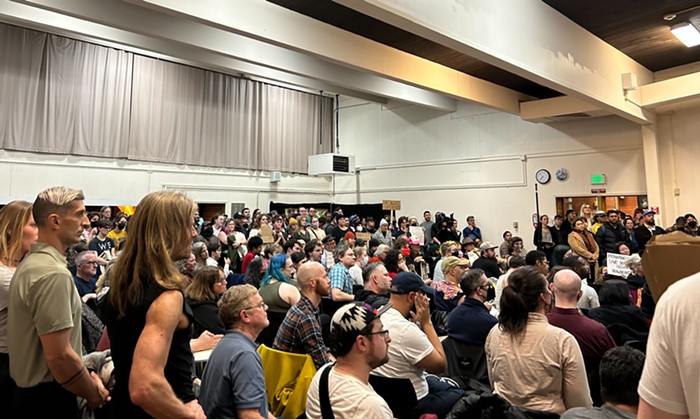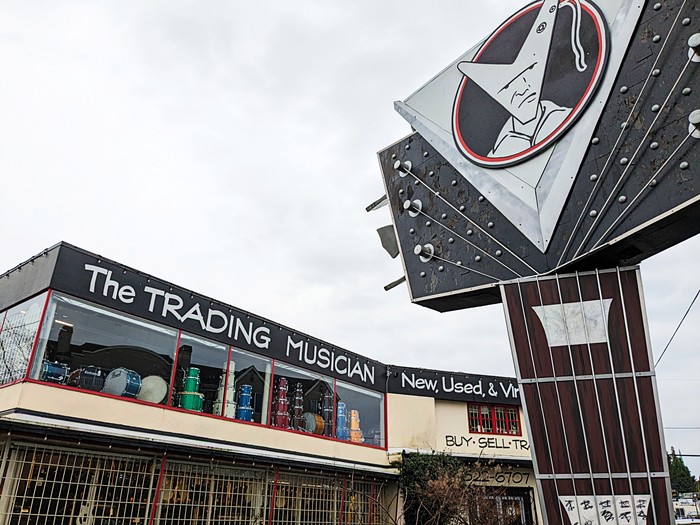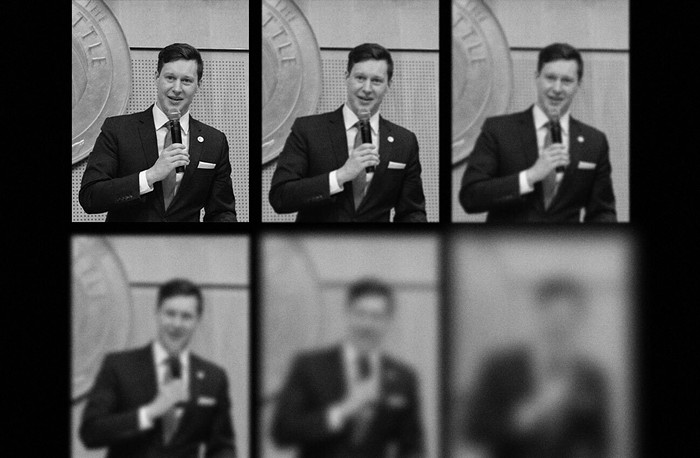Major changes are coming to Columbia City. In addition to a controversial development to house the chronically homeless, developers' plans call for hundreds of new market-rate
residential units, new affordable condos, and apartments. Solid estimates of how many new residents these developments will bring to the community are hard to come by, but a conservative guess puts the number near 1,000—a potential population increase of as much as 17 percent for a neighborhood that, as of the 2000 census, is home to fewer than 6,000.
On February 15, the city's Landmarks Preservation Board met to discuss the latest major project in the neighborhood—a new mixed-use development at Columbia Plaza, currently the site of a sea of parking spaces and a small shopping mall that backs up onto a park that's a crime hot spot for the area. Because the lot sits in the historic district, any new development there must go through landmark review—which means, among other things, that it must maintain the "self-contained, small-town quality" of downtown Columbia City and be a size "consistent with the massing of existing historic buildings."
That last requirement is where the project could run into problems. The massing (size and shape, rather than design) plans presented by Dana Behar of HAL Real Estate Investments and Ed Weinstein of architecture firm Weinstein AU at last week's landmarks board meeting showed one or more six-story residential buildings with retail on the ground level facing Rainier Avenue and Edmonds Street—a smaller street that runs perpendicular to Rainier down to the planned light rail station at Martin Luther King Jr. Way South.
Residents of the neighborhood have expressed alarm at the scale of the projects planned for the area, including another proposal at the other end of the historic district, by developer Harbor Properties, to redevelop an old plastics warehouse into a 375-unit condo complex six stories high. "The neighborhood does hope and pray that you'll build to a 40-foot height limit," [usually four stories] resident Chris Osborne said.
Meanwhile, another project a few blocks south in Hillman City—60 units of housing for Downtown Emergency Service Center clients who are chronically homeless, meaning continually homeless for more than a year—is already well underway, with a giant hole in the ground where a vacant lot used to be. The apartments, which will be monitored by DESC staff 24 hours a day, have been controversial among neighborhood residents, who worry about the impact of more low-income services on the vulnerable south end of the neighborhood. "Now that it's happening, the question is how to make it work," says Mikala Woodward, director of the Rainier Valley Historical Society. "It definitely feels like in the best case, it's not harmful."
The teams associated with the first two projects have a history of making developments fit in with the neighborhoods where they're located. For example, Weinstein AU designed the Agnes Lofts at 12th Avenue and East Pike Street, the award-winning downtown Banner Building, and many other developments around the city. As Weinstein told the landmarks board, "We're looking to do authentic buildings that are appropriate only for their sites and their circumstances." That ought to be exciting news for Columbia City residents—not cause for chagrin. ![]()


















